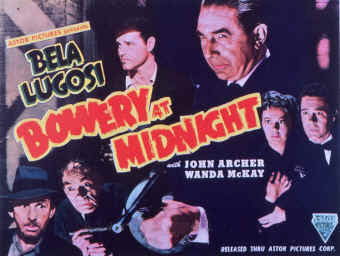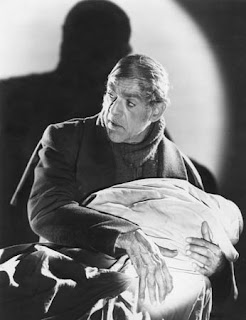 Note: Desuko Movie Spot is going on a brief Thanksgiving break. Check back next week for new reviews.
Note: Desuko Movie Spot is going on a brief Thanksgiving break. Check back next week for new reviews.The Scoop:
The late 1940s was a bad time for monster movies. Maybe there was too much postwar optimism going around, or maybe the horror cycle had just grown tired from being around too long. Whatever the case, by this time the classic monsters of the early '30s were reduced to cheesy characatures bordering on self-parody.
Witness this movie, in which the classic Universal monsters (Dracula, the Wolf Man and Frankenstein's monster, played for the most part by the original actors -- Bela Lugosi, Lon Chaney Jr. and Glenn Strange) are nothing but straight men for Abbott and Costello's zany antics. As an Abbott and Costello film, this is worthwhile; it the duo at their peak, with some of their best gags. But as a monster movie it is abysmal. The classic creatures that once frightened and thrilled a generation are reduced to toothless caricatures -- and not by parodists, but by the very studio that created them, which was now desperate to exploit them for the sake of making a quick buck. The Universal monsters were already on their way down that slippery slope, thanks to the World War II-era "team up" films ("Frankenstein Meets the Wolf Man," "House of Dracula," etc.), but this production finally put the last nails in the coffin.
But the exploitation worked, and "Abbott and Costello Meet Frankenstein" turned out being a huge box office hit when it was released. What's more, the film's popularity helped launch the comic "monster mash" craze of the '50s and early '60s, which provided great nostalgia for the kids of the era, but which also kept American horror film dead as a genre for two decades.
Horror wouldn't live again on American screens until a group of young maverick filmmakers from the indie underground came along in the late '60s and early '70s with such films as "Night of the Living Dead" and "The Texas Chainsaw Massacre." But by then, the boogeymen of the American imagination would be very different monsters indeed. Dracula, Frankenstein's monster, the Wolf Man, the Mummy, the Invisible Man -- they all would just seem like distant jokes by then, thanks in no small part to "Abbott and Costello Meet Frankenstein."
Best Line:
"What we need tonight is young blood -- and brains!"
Side Note:
Vincent Price has an uncredited cameo as the voice of the Invisible Man at the end. Also, Mary Shelley got a writing credit on this one, ostensibly because it's based on her novel. (Um, yeah...)
Companion Viewing:
"Mad Monster Party" (1966).
Links:
IMDb.
Stomp Tokyo.
Take a Look:
The trailer:






